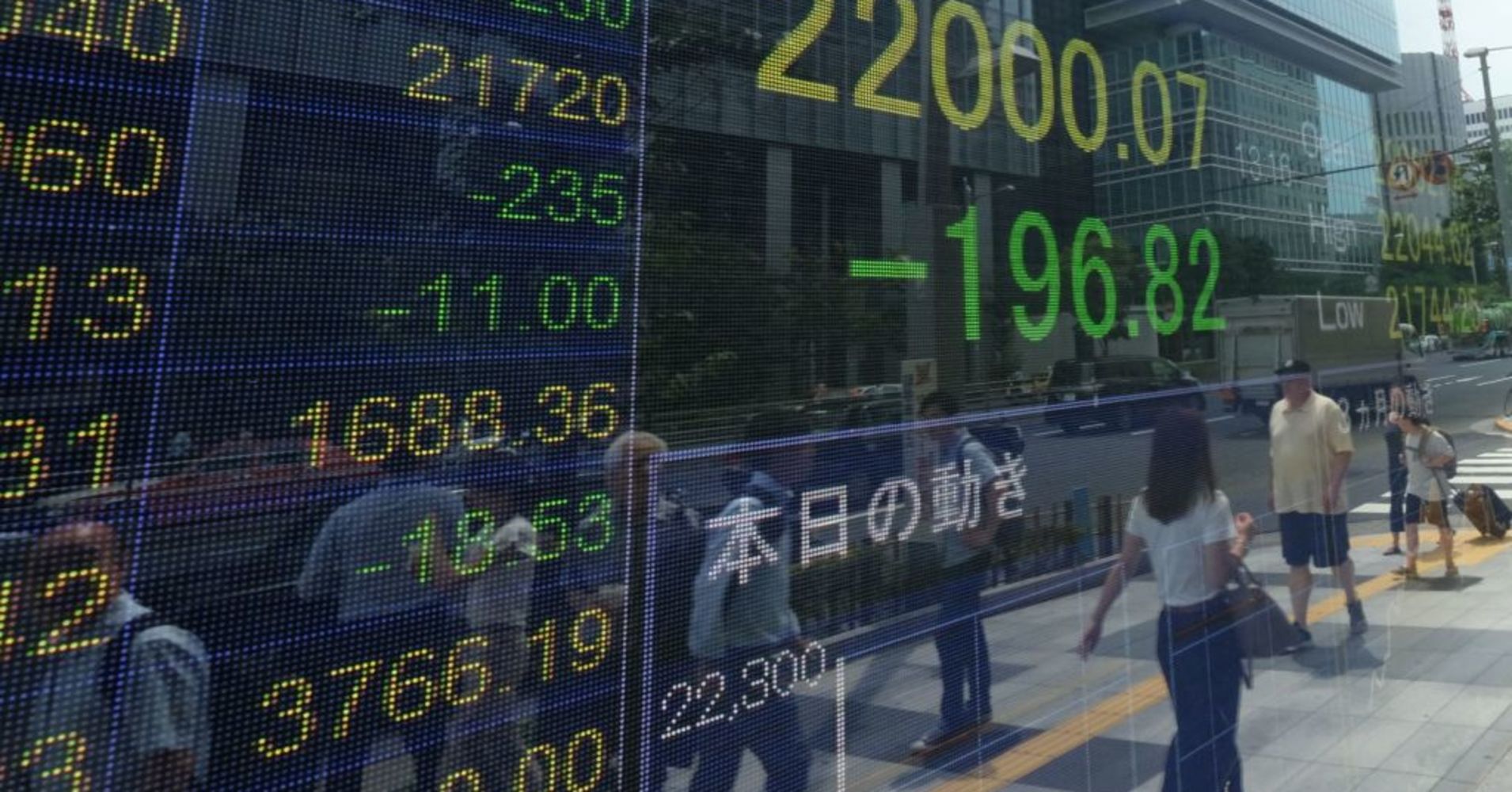
Asian shares closed mixed on Monday, with Japanese stocks pressured by strength in the yen after the dollar dropped on U.S. President Donald Trump’s criticism of the Federal Reserve.
The Nikkei 225 dropped 1.33 percent, or 300.89 points, to close at 22,396.99 as the dollar extended its losses against the Japanese currency.
Against the yen, the dollar traded at 110.98 at 2:55 p.m. HK/SIN, after dipping as low as 110.74 earlier in the session following a Reuters report that the Bank of Japan was engaging in “unusually active discussions” ahead of its July decision. The U.S. currency was 0.37 percent weaker than the 111.4 handle seen at the end of Friday trade in New York.
Major exporters closed lower, with the electric appliances sector falling 0.98 percent and automakers declining 1.18 percent. Uniqlo-owner Fast Retailing dropped 5.72 percent. Financials, however, recorded sharp gains, with Mitsubishi UFJ Financial Group up 3.64 percent. The broader Topix recorded more moderate declines, ending lower by 0.36 percent.
Meanwhile, Chinese equities finished the day mixed. The Shanghai composite reversed early losses to climb 1.07 percent to 2,859.52, adding to sharp gains seen in the last session, as banks and industrials offset sharp losses in the health care sector. The smaller Shenzhen composite finished the day higher by 0.53 percent and the blue-chip CSI 300 index closed up 0.94 percent.
Hong Kong’s Hang Seng Index was steady before the market close, tacking on 0.06 percent by 3:00 p.m. HK/SIN as steep losses in the tech space were offset by gains in property stocks, materials and heavily weighted financials.
Elsewhere, the Kospi edged down by 0.87 percent to close at 2,269.31 as steep declines in blue chip tech stocks — including Samsung Electronics declining 2 percent and SK Hynix falling 7.05 percent — dragged the index lower.
In Australia, the S&P/ASX 200 fell 0.93 percent to 6,227.60 amid broad-based losses, with all sectors closing in negative territory bar the energy subindex.
MSCI’s index of shares in Asia Pacific excluding Japan inched lower by 0.06 percent during Asia afternoon trade.
The dollar extended its losses after Trump doubled down on his criticism of global monetary policy and the Federal Reserve, tweeting that “China, the European Union and others have been manipulating their currencies and interest rates lower.” That, coupled with U.S. interest rate hikes, was making the U.S. lose its competitive edge as the dollar strengthened, Trump claimed.
Trump said in a separate tweet in reference to the Fed that “[t]ightening now hurts all that we have done.” That came after the president told CNBC in an interview that he was “not thrilled” about the central bank hiking interest rates.
The dollar nursed its wounds on the back of those comments after Friday’s slide. The dollar index, which tracks the greenback against a basket of currencies, stood at 94.371 after stumbling in the last session.
“We understand the political economy of the dollar is one that the administration wants a weaker dollar, whether it’s implicitly through their policy actions, their protectionist policies focusing on the current account deficit, or explicit, as we’ve heard from the president multiple times now,” Viraj Patel, FX strategist at ING, told CNBC’s “Squawk Box.”
An important focus for markets remains the U.S.-China trade war: Trump told CNBC in a recent interview that he was prepared to impose tariffs on all Chinese imports to the U.S. if he had to. “I’m ready to go to 500,” the president told CNBC’s Joe Kernen in an interview, referring to the $505.5 billion in goods from China the U.S. imported in 2017.
The U.S. and China have already exchanged new tariffs — each hitting $34 billion worth of goods from the other. The Trump administration has also announced a list of proposed duties on $200 billion in Chinese imports, although those tariffs are not yet in effect.
“The hope is that this bluster is a negotiation tactic that will be watered down during negotiations but increasingly it looks difficult to duck trade blowback,” Vishnu Varathan, head of economics and strategy at Mizuho Bank, wrote in a note.
Push back from France at the weekend’s G-20 meeting, meanwhile, makes it “abundantly clear that trade war risks are not likely to dissipate like water off a duck’s back; but instead it could be a slow burn and mounting risk with markets likely to have outbursts of risk off,” Varathan added.
Despite Trump’s recent remarks, stocks stateside finished the Friday session only marginally lower as strong corporate results releases balanced investors’ fear of the trade war and its implications for global economic growth. About 16.4 percent of S&P 500 companies had released their quarterly results as of Friday, with 83 percent of them topping expectations, according to FactSet.
In individual market movers, shares of telecommunications equipment maker ZTE jumped 1.5 percent in Hong Kong by 3:03 p.m. HK/SIN and rose 0.61 percent in Shenzhen. Those gains came after lawmakers in the U.S. removed measures from a bill that would have put a supplier ban back in place against the company, Reuters reported.
Meanwhile, Hainan Airlines dropped 9.97 percent, close to the daily limit of 10 percent, extending losses seen on Friday when shares returned to trade after being halted since January.

